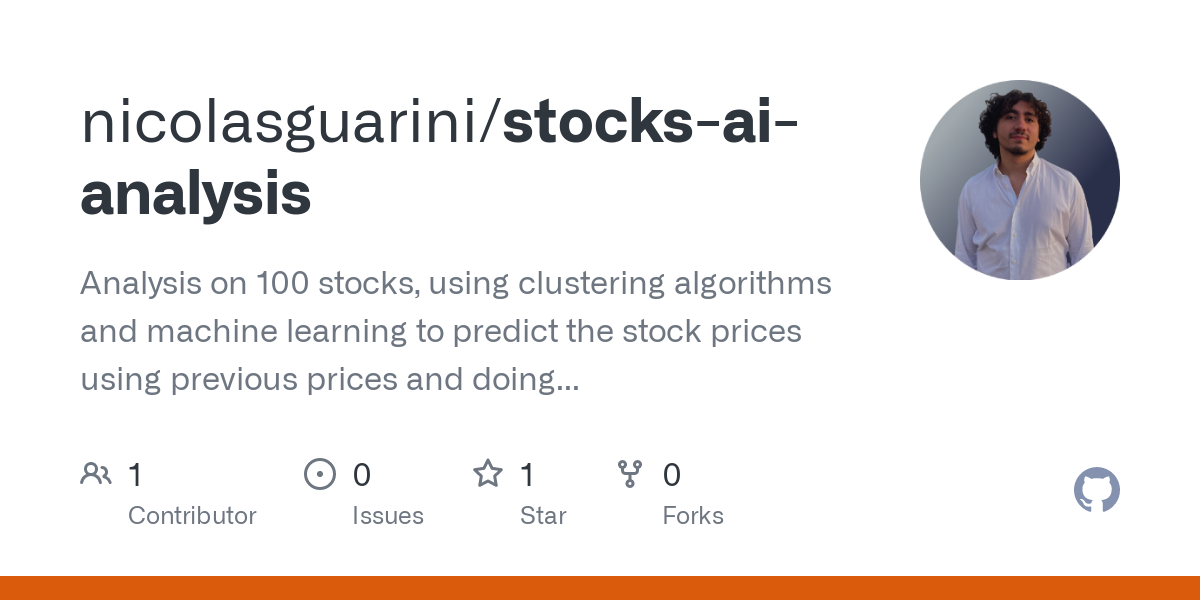20 New Facts For Picking Best Ai copyright
20 New Facts For Picking Best Ai copyright
Blog Article
Top 10 Tips To Stay Up-To-Date On Ai Regulations Stock Trading, From The Penny Stock Market To copyright
Being up-to-date on the latest regulations is essential for safe and secure AI stock trading, especially when trading in volatile markets such as copyright and penny stocks. Regulations affect asset values as well as trading strategies. These 10 suggestions will help you stay informed about regulations, both in traditional stock markets and in the copyright market.
1. Follow the regulatory authorities and agencies.
Keep an eye out for updates from regulators
For penny Stocks, U.S. Securities and Exchange Commission and Financial Conduct Authority of the UK.
For copyright: U.S. Commodity Futures Trading Commission. SEC (for copyright classification). Global regulators, like European Securities and Markets Authority.
The reason: They provide information, updates and enforcement actions that affect market regulation.
2. Join Financial News Outlets
Join our newsletter for financial news and information that focuses on changes in the regulatory environment.
For news on copyright, check out Bloomberg, Reuters The Wall Street Journal CoinDesk The Block.
What's the reason? Financial news outlets frequently release regulatory updates earlier so that you can stay abreast of any legal developments.
3. Participate in Industry Associations and Forums
Tips Take advantage of forums or groups in your field that regularly inform you about issues related to regulation.
CFA Institute and SIFMA, the Securities Industry and Financial Markets Association (SIFMA) are two of the most reliable organizations to look up for stock.
copyright: Blockchain Association CryptoCouncil.
Why: These organizations offer insight, webinars and guidance on upcoming regulatory changes.
4. Track Legislative Developments
Tips: Keep track of the legislation and regulations in the process in your country with regard to financial markets, cryptocurrencies and other issues of regulation.
For penny stocks: Keep an eye out for updates on regulation of market manipulation as well as trading methods.
To stay on top of copyright, be sure to be on the lookout for legislative changes affecting stablecoins, digital assets, and copyright taxation.
Why: Legislative changes often provide a clue to future changes in regulatory frameworks that could impact your plan.
5. Utilize legal and regulatory platforms
Tip: Choose platforms that track changes in the law and regulations within the copyright and financial sector.
For Stocks: Law360, LexisNexis.
copyright Regulatory News: CoinTelegraph.
Why? These platforms give regular updates on changes to the regulatory environment which could impact your trading.
6. Follow Market Analysts & Legal Experts
Follow legal and financial analysts who specialize in copyright law or financial regulations through professional social media channels.
For penny Stocks as well as Traditional Markets: Follow SEC experts and financial analysts on Twitter and LinkedIn.
For copyright: Search for influencers and lawyers who focus on the regulation of copyright.
Why: These experts offer rapid insight and provide a detailed understanding of the complex regulatory changes.
7. Keep an eye out for updates on exchanges and brokers
It is recommended to be sure to check your broker and trading platforms for any updates regarding the compliance of regulations.
copyright exchanges such as copyright copyright copyright copyright and copyright frequently release regular compliance updates.
Brokers E*TRADE Charles Schwab TD Ameritrade and TD Ameritrade provide regulatory information regarding trading restrictions.
What is the reason? Exchanges are typically more flexible to change in the law than other parts of the market. This allows them to have a better understanding of evolving legal requirements.
8. Make use of AI to analyze risk in Regulatory Analysis
Tips: Use AI tools to monitor and analyzing risk in regulatory markets. AI can analyze government publications, news outlets as well as legal databases.
Why: AI can identify risky regulatory patterns before they become widely spread. This allows you to modify your trading strategies in advance.
9. Stay informed on tax regulations
Be aware of changes to tax regulations that may affect your stock and copyright investment.
For Stocks: Be alert for changes on capital gains laws and tax loss harvesting regulations and new reporting obligations.
For copyright: Be informed about taxation regulations relating to copyright transactions.
Tax laws could have a major impact on net earnings, in particular with the increasing interest in copyright-taxation.
10. Participate in Webinars and conferences
Tip: Attend webinars, online conferences, as well as in-person events that are focused on copyright and financial regulations.
Examples of Webinars and conferences that are organized by the SEC & CFTC.
The reason: Industry-specific events provide the chance to talk directly with regulators and get insight from experts about the future regulatory shifts.
Bonus: Automation of Compliance Management
Tip: Automate compliance monitoring process by using AI-based tools.
Why: Automating compliance will keep you on top of the latest legal developments, without having to follow them manually.
Use these guidelines to ensure that you are ensuring that your AI strategy for trading stocks is in compliance with current regulations, whether you are trading penny stocks, or cryptocurrencies. You can minimize legal risk by being proactive and staying up-to-date. Follow the most popular ai stock price prediction for blog recommendations including ai financial advisor, ai trading app, artificial intelligence stocks, ai for stock trading, ai stock prediction, ai stock analysis, ai stock picker, trading bots for stocks, best copyright prediction site, ai for copyright trading and more. 
Top 10 Tips To Monitor The Market's Tempers Using Ai For Stock Pickers, Predictions, As Well As Investments
Monitoring the market sentiment is vital for AI-powered predictions, investments and selecting stocks. Market sentiment affects stock prices as well as overall market developments. AI-powered tools are able to analyze large amounts of data to identify signals of sentiment. Here are 10 ways on how to use AI to select stocks.
1. Make use of Natural Language Processing (NLP) to analyze Sentiment Analysis
Make use of AI-driven Natural language processing to analyze the text in earnings statements, news articles and financial blogs and social media sites like Twitter as well as Reddit to gauge sentiment.
Why is that? NLP allows AIs to understand and quantify feelings thoughts, opinions, and sentiment that are expressed in documents that are not structured, providing real-time trading decisions using sentiment analysis.
2. Monitor Social Media and News to Get Sentiments in Real Time
Tip: Use AI algorithms to collect information from live social media, news platforms, and forums to monitor shifts in sentiment associated with stock or market events.
What's the reason? News and social media can have a rapid impact on market movements and can be particularly volatile in assets such as penny stocks and copyright. A real-time analysis of sentiment can give practical insights to make short-term trading choices.
3. Use Machine Learning for Sentiment Assessment
Tip: Use machine-learning algorithms to predict future trends in the market's sentiment based upon the historical data.
What is the reason: AI is able to forecast price movements using patterns of sentiment data. It also can predict historical stock performance.
4. Combining Sentiment with Technical and Fundamental Data
TIP : Use traditional technical indicators like moving averages (e.g. RSI), and fundamental metrics such P/E and earnings reports to develop an investment plan that is more comprehensive.
The reason is that sentiment is an additional data layer that is in addition to fundamental and technical analysis. Combining these factors enhances the AI's capacity to make more knowledgeable and balanced stock forecasts.
5. Watch for changes in sentiment during earnings reports as well as key events
Tip: Use AI to observe changes in sentiment before and after key events like earnings reports, launches of products, or even regulatory announcements, since they could significantly influence stock prices.
What's the reason? These events are often the catalysts for significant changes in market sentiment. AI can spot changes in sentiment quickly and offer investors a better understanding of the potential stock price movements that could occur due to these triggers.
6. Use Sentiment Arrays as a way to determine current market trends
Tip: Cluster the sentiment data into clusters in order to determine general trends in the market, specific sectors or stocks experiencing either negative or positive sentiment.
What is the reason? Sentiment clustering can help AI detect trends that aren't evident in individual stocks or small datasets, and can help to identify industries or sectors that have shifting investor interest.
7. Make use of sentiment scoring for evaluation of stocks
Tips: Use news, forums or social media to analyse sentiments and build scores. Use these scores for filtering and ranking stocks based on the positive or negative sentiments.
The reason: Sentiment scores can be used to determine the mood of the market towards an individual stock. This helps with better decision-making. AI can refine these scores over time, which can increase the accuracy of predictions.
8. Track investor sentiment on multiple platforms
Tips - Check the sentiment across platforms (Twitter, financial news websites, Reddit, etc.). Cross-reference sentiments across different sources to create a complete picture.
Why: The opinions on a single platform can be incomplete or skewed. Monitoring sentiment across different platforms gives a better and more precise image of the opinions of investors.
9. Detect Sudden Sentiment Shifts Using AI Alerts
Create AI alerts to notify you of any significant changes in the sentiment toward a specific sector or stock.
What's the reason? abrupt changes in the mood like an increase in positive or negative comments, can precede the rapid movement of prices. AI alerts help investors quickly react before the market changes.
10. Analyze trends in long-term sentiment
Tips: Make use of AI analysis to identify the long-term trends in sentiment, whether they're for specific sectors, stocks or the market in general (e.g. a bullish or sceptical mood over various durations, such as months or even years).
The reason: Long-term trends in sentiment are a good indicator of stocks that have strong future potential or signs of the emergence of risk. This wider perspective is in contrast to indicators of short-term sentiment and can guide investment strategies for the long term.
Bonus: Combine Sentiment and Economic Indicators
Tips: Use macroeconomic indicators such as GDP growth, inflation or employment statistics together with sentiment analysis to determine how the broader economic environment can affect the market's sentiment.
Why: The broader economic environment has an impact on investor sentiment, which in turn influences the stock market's price. AI can gain deeper insights through the combination of sentiment indicators with economic indicators.
Investors can use AI to analyze and monitor market sentiments by following these guidelines. This will enable them to make more accurate and faster predictions as well as investment decisions. Sentiment Analysis is an additional layer of real-time insights that complement traditional analysis. It helps AI stockpickers navigate complex market situations with greater accuracy. Have a look at the best additional resources for site tips including ai stock trading app, ai for investing, smart stocks ai, stock analysis app, ai for stock trading, ai copyright trading bot, trading with ai, best copyright prediction site, ai predictor, copyright ai trading and more.